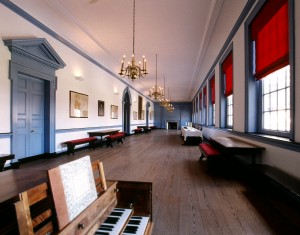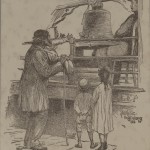
In the 1850s, fugitive slave hearings and the Christiana “riot” trial took place in federal courts located on the second floor of Independence Hall, since restored to its colonial-era appearance. (Independence National Historical Park)
Independence Hall is well known for its associations with the Declaration of Independence and the U.S. Constitution. By extending the history of the landmark beyond the period of the American Revolution, Independence Hall in American Memory finds that struggles for freedom continued in and around Independence Hall long after the ink dried on the nation’s founding documents.
Frederick Douglass at the State House (1844) [Link to newspaper accounts]
Fugitive Slave Hearings of the 1850s: [Link to newspaper accounts]
The Christiana “Riot” Trial [Link to Google E-Book]
National Freedom Day [Link to Encyclopedia of Greater Philadelphia]
The President’s House [Link to case study]
 Above: Detail of newspaper illustration depicting African Americans reaching toward the Liberty Bell during its exhibition tour to New Orleans in 1885. (Independence National Historical Park)
Above: Detail of newspaper illustration depicting African Americans reaching toward the Liberty Bell during its exhibition tour to New Orleans in 1885. (Independence National Historical Park)
[…] to ask what they would most like to see. From them came the suggestions for highlighting the fugitive slave hearings that took place in Independence Hall in the 1850s, for providing information about protests and […]